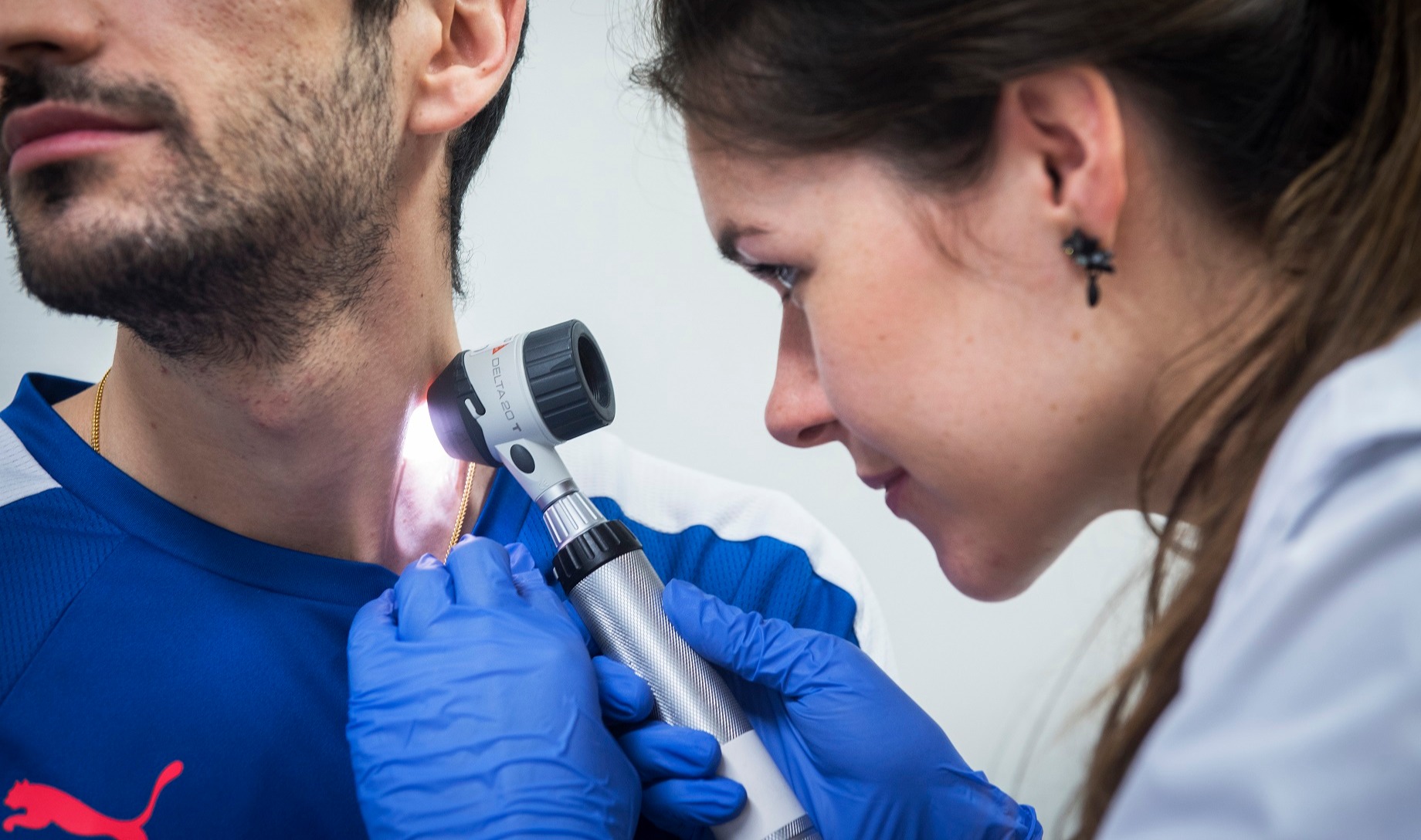Melanoma
What is it?
A melanoma is a malignant skin tumour that starts in the pigment cells of the skin.
Why is early detection important?
Detecting and treating this type of skin cancer at an early phase are crucial to ensure the highest possible chance of a cure. So if you notice changes in pigment patches or if new pigment patches appear, consult a dermatologist for a total skin inspection. This involves closely inspecting the pigment patches using a dermatoscope.
Read more under the photo.

Patients with an increased risk of melanoma (multiple pigment patches, (personal) previous history of melanoma) are monitored by means of digital microscopy. During this consultation, general photos of the skin are taken, together with close-up photos of the pigment patches so as to monitor these in detail.
The Dermatology service at UZ Brussel takes part in the Euromelanoma screening campaign every year.
How is melanoma treated?
If a suspected pigment lesion is noticed, this can be removed by surgery in the Dermatology service.
The Dermatology service also works closely with other services that are involved in the treatment of patients with melanoma. All patients with a melanoma diagnosis are discussed in a multidisciplinary team of experts to ensure the best treatment.
Patients whose melanoma is detected at a later, advanced stage can be treated in the melanoma clinic. Here the dermatologist works with a medical oncologist, oncological surgeon and radiotherapist to be able to offer the patient a complete and personalised treatment.
